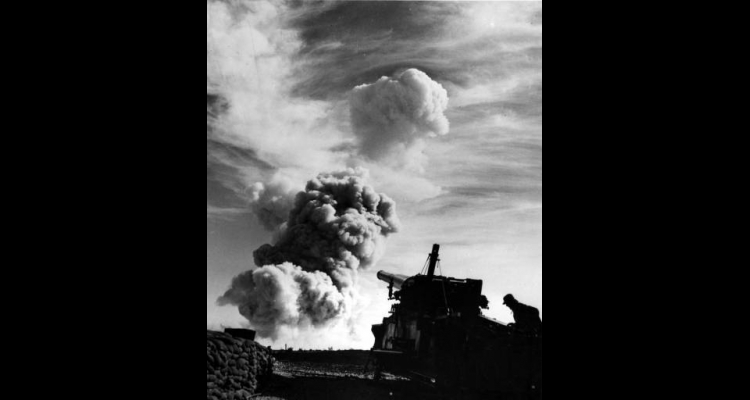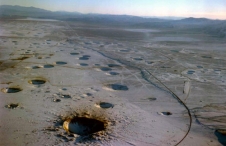Frenchman Flat
Frenchman Flat is a dry lakebed, covering 123 square miles, contained within areas 5 and 11 of the Nevada Test Site. At this site, the military conducted fourteen atmospheric tests between 1951 and 1962, and five underground nuclear tests between 1965 and 1968. The underground tests followed the 1963 Limited Test Ban Treaty that prevented further atmospheric testing. The flat terrain of the area gave good visibility for photographing and filming the tests for later review.
The first test at the Nevada Test Site, then called the Nevada Proving Ground, occurred at Frenchman Flat. The test, code-named "Able," occurred on January 27, 1951, as part of a series of tests called Operation Ranger. It was the first nuclear test within the continental United States since the Trinity event on July 16, 1945, in Alamagordo, New Mexico.
Many of the atmospheric tests were so-called "weapons effect tests" that recorded the blast effects of an atomic bomb on "doom towns" which included buildings, bridges, appliances, and even mannequins dressed in the latest fashions. In some cases, the bombs were aircraft-delivered; in others, the bomb was attached to a balloon or placed at the top of a tower. During each test, thousands of photographs and hundreds of 16mm and 35mm movie cameras captured every aspect of the explosion to determine the effectiveness of the bomb.
One of the notable atmospheric tests was the Grable event during Operation Upshot-Knothole. The test used the army's 280mm canon, nicknamed "Atomic Annie," to deliver a 15-kiloton nuclear artillery shell. This was the first and only test of its kind at the Nevada Test Site, delivering the 809-pound projectile 11,000 yards before it exploded 524 feet above the lakebed.
Visitors to the Nevada Test Site can still see the remnants of the tests at Frenchman Flat. Artifacts left at the site include railroad bridges, severely damaged buildings, a Mosler bank vault, and wooden bleachers used by the VIPs and senior military personnel invited to watch the tests.
Article Locations
Related Articles
Further Reading
None at this time.




